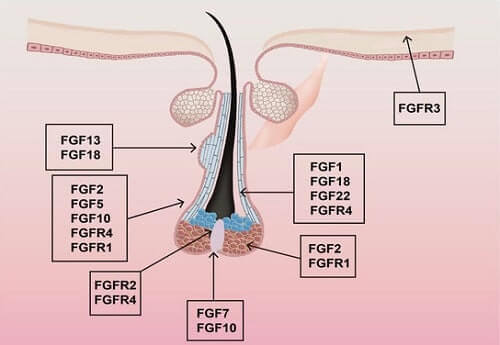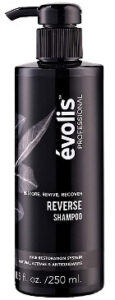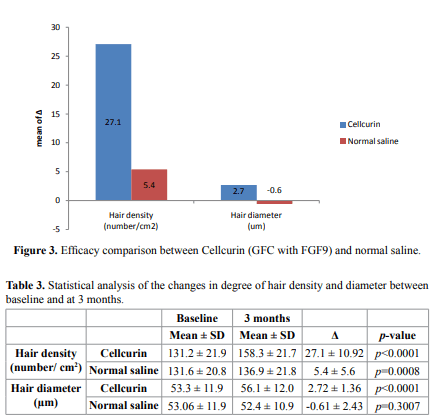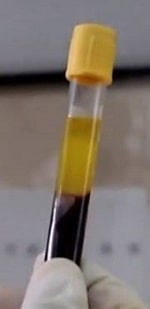I have previously covered various fibroblast growth factors (FGFs) and their impact on hair growth. This post is a comprehensive summary of the key FGFs (cell signaling proteins) involved in hair follicle cycling.
Update: August 20, 2025
A new study from China covers in detail recent advances in understanding the role of fibroblast growth factors in hair follicle growth. I particularly liked one of the images they present in the paper (see below). They also cover potential treatments that can target FGFs to reverse androgenetic alopecia. Key quote:
“Targeted FGF delivery could bypass DHT-induced Wnt suppression by directly amplifying β-catenin-dependent anagen signaling while counteracting FGF5-mediated catagen effects.”

July 17, 2021
Fibrobasts Growth Factors and Hair Growth
There exist 23 members of the FGF gene family, each identified by a number at the end. At least 5 of these fibroblast growth factors have significant impact upon hair growth. Usually via a modulation of the Wnt/β-Catenin pathway and Sonic hedgehog (Shh) expression. The fibroblast growth factor receptor family has 4 members,
FGF-1, FGF-2 and FGF-10
FGF1, FGF2 and FGF10 have a positive impact on hair growth. A Chinese study from 2015 found that FGF-1, FGF-2, and FGF-10 fibroblast growth factors promote hair growth. They do so by inducing and extending the anagen growth phase of hair follicle cycling. Of note, the Chinese State Food and Drug Administration (SFDA) has approved FGF-1, FGF-2 and FGF-10 for wounding healing. And “China is the only country in the world for clinical application of these drugs”.
A South Korean study from 2016 found that arachidonic acid increased the expression of FGF-10 (and FGF-7). This in turn promoted hair growth.
A Japanese study from 2016 concluded that FGF-2 (also known as “basic fibroblast growth factor” or bFGF) seems to have a positive impact on hair growth. Interestingly, when I interviewed Dr. Malcolm Xing, he mentioned that FGF-2 is the preferred growth factor used at this clinic for his work purposes.
FGF-5
On this blog, I have covered FGF-5 more than any other fibroblast growth factor. Interestingly, this particular growth factor needs to be inhibited in order to promote hair growth.

An Australian company named Cellmid has been very successful at selling its Evolis line of products. See the science behind their FGF-5 inhibiting concept here and in the video below. On Amazon, their FGF-5 inhibiting shampoo currently has an average rating of 4.0 out of 4.5 based on over 200 reviews.
The company’s products contain natural botanicals that have been shown to inhibit FGF-5. For example, one of the ingredients is Sanguisorba Officinalis Root Extract, known to reduce FGF-5 and prolong the anagen hair growth cycle.
Also see this Japanese patent related to a natural FGF-5 inhibiting product for hair growth. It contains the following natural ingredients: Rosa multiflora, Eriobotrya japonica, Sanguisorba officinalis, Arctostophylos uva-urusi, Mate, cat’s claw, mugwort, Uncaria rhynchophylla, tea and brown algae.
FGF-7
FGF-7 (also called keratinocyte growth factor, or KGF) is required for hair growth. The well known hair loss researcher Dr. Elaine Fuchs co-authored an important study on FGF-7, hair development and wound healing in 1995.
A 2000 study found keratinocyte growth factor to be an important endogenous mediator of hair follicle growth. Histogen’s now discontinued Hair Stimulating Complex product included KGF as one of the key hair growth factors.
FGF-9
An important 2013 mice study from U Penn found that FGF-9 induces hair growth after wounding. The renowned Dr. George Cotsarelis was a co-author. Reducing FGF-9 expression decreased hair follicle formation. In contrast, over-expressing FGF-5 led to a two to three-fold increase in the number of new hair follicles.
The researchers think that using FGF-9 to treat wounds in people can also help regrow hair. Human skin tends to scar and not regenerate any hair after suffering injury, In contrast, mice skin is much better at also re-growing hair after injury.
Follica licensed the intellectual property rights soon after the study was published. The actual 2009 patent can be seen here. It seems like there exists a window of opportunity after wounding during which:
“The FGF9 pathway could be modulated to potentiate hair neogenesis”.
Cellcurin Topical Fibroblast Growth Factor 9
Interestingly, a 2019 study from South Korea tested a trademarked cocktail containing topical FGF-9 (Cellcurin). They used this growth factor cocktail (GFC) in combination with microneedling on patients with androgenetic alopecia. The results (see below image) indicate Cellcurin to have a positive impact on hair growth and follicle thickness. A related article also mentions the addition of NMN.

I hope someone can make a topical cocktail of most of the above fibroblast growth factors. At the very least, maybe this will reduce hair loss drastically.
An interesting May 2021 study from China found that combination therapy with topical minoxidil and nano-microneedle-assisted fibroblast growth factor led to the most hair growth. It seems like they are using basic fibroblast factor (bFGF), aka FGF-2.

FGF-12
A 2022 study from South Korea found that FGF-12 promoted hair growth by inducing the anagen phase of hair follicles in mice.
